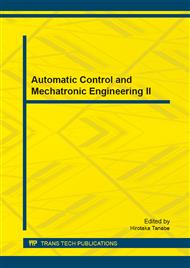p.586
p.590
p.597
p.602
p.606
p.610
p.614
p.618
p.623
Tapered Roller Bearing and Comprehensive Durability Identification of Ceramic Cutting Materials in Machining Process of Steel 80MoCrV4016
Abstract:
Specification cutting tools durability made of cutting ceramic in machining process of steel 80MoCrV4016 is very important for economics of small and medium-sized enterprises, because cutting tool durability is factor that significantly affects the budget of these enterprises. This problematic is determined for small and medium-sized manufacturers of bearings, because steel 80MoCrV4016 is most commonly used for production of bearings. Durability of cutting tool defines lifetime of this cutting tool and it determines its suitability for select technological operation. Especially for cutting ceramic is necessary to define durability dependence on available set of cutting speeds and to determine lifetime of tools made of cutting ceramic. Technical science defines a lot of different factors, that they may be cause of shorter cutting tool lifetime. For increase cutting tool durability is necessary maximally possible elimination of these factors. Determination of cutting tool durability is very important, because provides comprehensive information how to determine appropriate technological conditions for selected cutting tool. In engineering is for determination of cutting tools durability used T-vc dependence. The article describes process how to create durability dependence for cutting tools made of cutting ceramic by means of T-vc dependence in machining process of steel 80MoCrV4016.
Info:
Periodical:
Pages:
606-609
Citation:
Online since:
September 2013
Authors:
Keywords:
Price:
Сopyright:
© 2013 Trans Tech Publications Ltd. All Rights Reserved
Share:
Citation:


